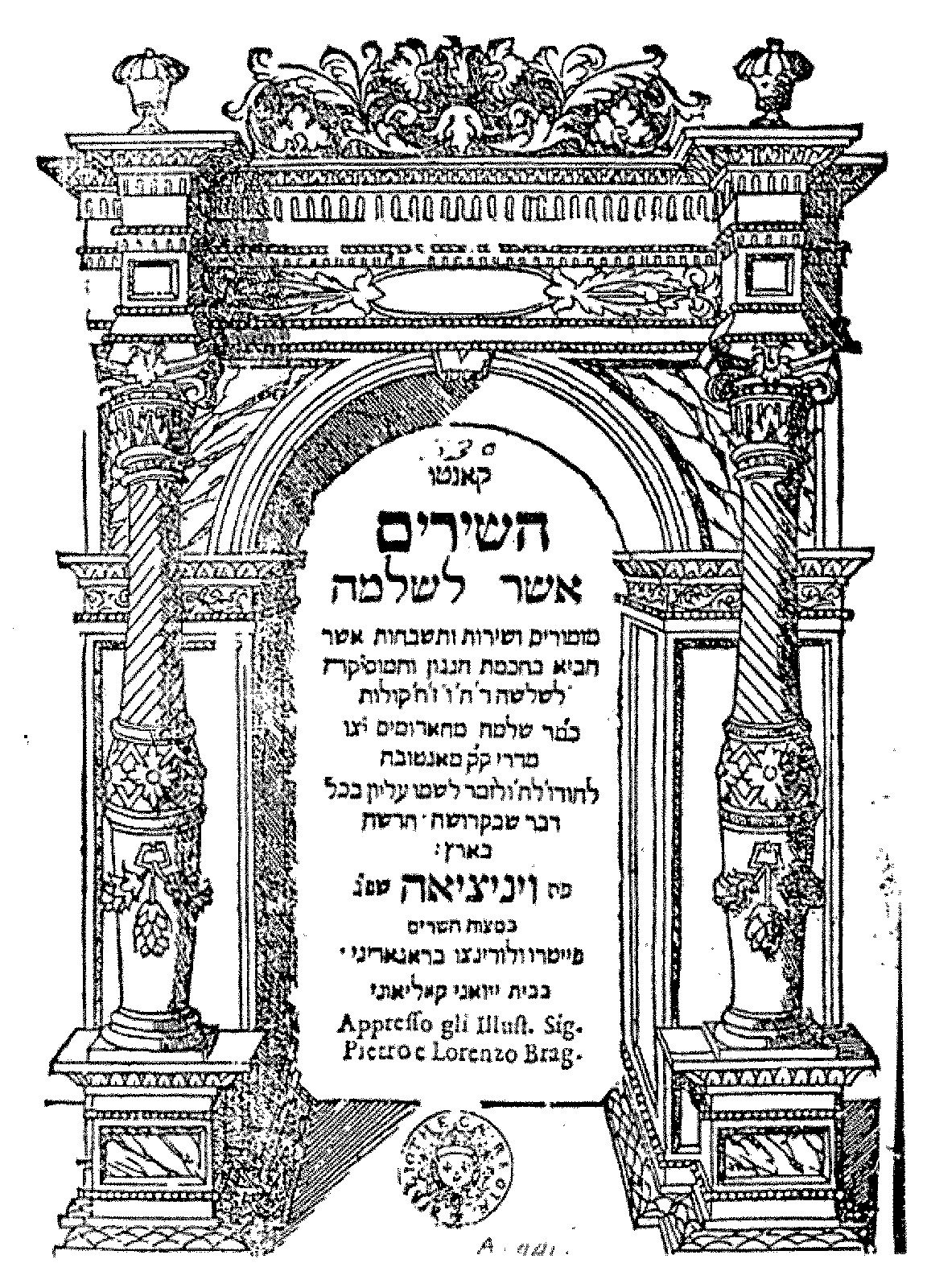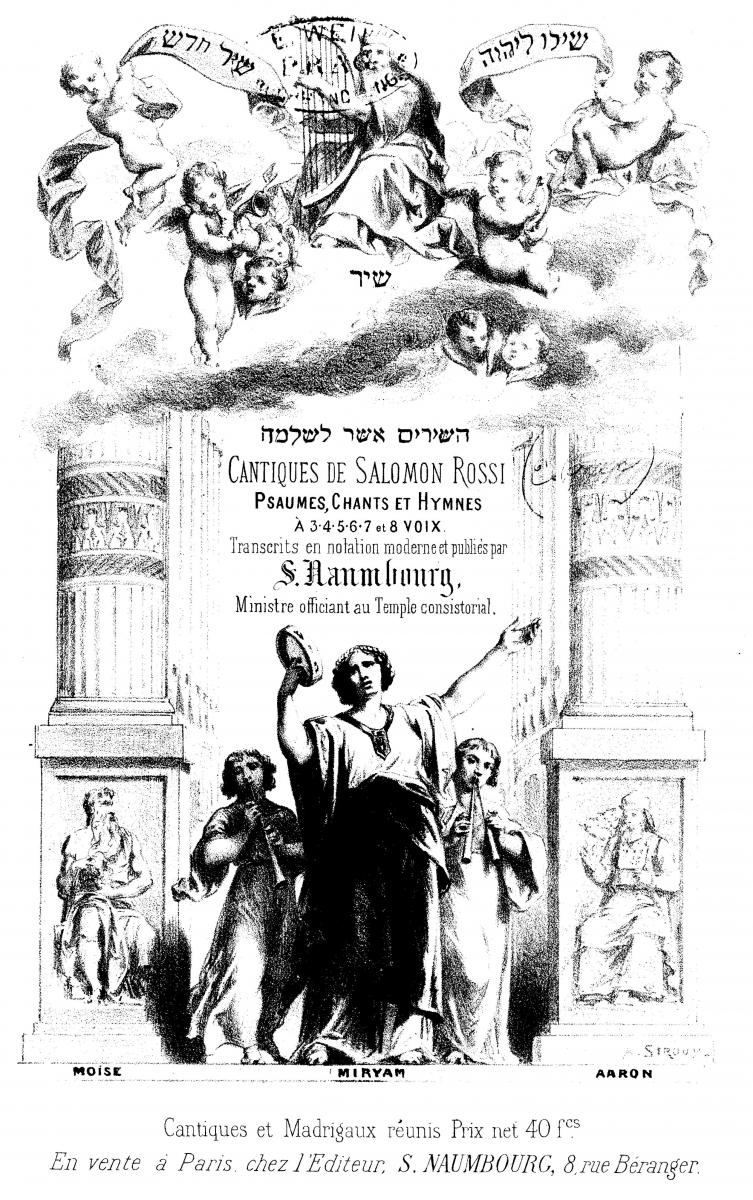Even if you are mildly interested in Jewish music, you cannot avoid Salamone Rossi and his groundbreaking work, HaShirim Asher LiShlomo whose four-hundredth anniversary we mark in 2022/3. Printed in Venice by the famous Bragadini brothers at the press of Giovanni Caleoni, this collection of polyphonic settings of Hebrew prayers, psalms and other religious poems has not ceased to captivate the imagination of modern musicians, scholars and their audiences. As time passed, HaShirim’s presence in the public space seems to have grown exponentially, especially in the twenty-first century, when the digital revolution enabled wider access to Rossi’s work. Artists perform and record his Hebrew settings time after time and these performances and recordings become readily available online. Academic events and new publications about this pioneer work of Hebrew music continues to emerge, squeezing new insights from every bar of its score and from every word from the preface and the rabbinical essay that preceded the score in its original publication of 1622/3.
Salamone Rossi’s HaShirim Asher LiShlomo in its Fourth Centennial (5383-5783)
Title page of the first modern edition of HaShrim (1877)
edited by Samuel Naumbourg
This irresistible allure of Rossi and HaShirim to modern audiences triggered two decades ago an essay by Edwin Seroussi, in which he reviewed the trailblazing biography of Rossi by his admired teacher Prof. Don Harrán z”l. Harrán dedicated a considerable span of his academic career to researching Rossi’s life and work. With a tongue in cheek, Seroussi’s essay coined the concept of ‘Rossimania’ to address the disproportionate attention that Rossi’s work received vis-à-vis so many other important subjects in Jewish music research. The purpose of this neologism was a constructive one, to stress how modern discourses shape a field of inquiry and what are the motivations and interests of agents active in the shaping of such discourses. However, some readers (but not Harrán!) took this expression as rather offensive to the memory of the venerated composer.
Almost a quarter of a century since the publication of Harrán’s still unsurpassed work, Seroussi returned to his essay on the occasion of HaShirim’s quadricentennial. The essay first appeared in Hebrew, in the quarterly Pe’amim (volume 93 [2003]) and later on in a slightly lengthier version in English, in Min’ad: Israel Studies in Musicology Online (volume 3 [2004]). It reappears here (see below link to PDF for download) in a revised, edited and substantially expanded version with a bibliographical and sonographic appendix.
Additional Materials
References to HaShirim in old catalogues of Hebraica mentioned in Seroussi's essay:

HaShirim in Johann C. Wolf’s Biblotheca Hebraea (1733) [1]
 HaShirim in the Catalogue of the David Oppenheim Collection (1826) [2]
HaShirim in the Catalogue of the David Oppenheim Collection (1826) [2]

HaShirim in Fürst’s Bibliotheca Judaica, vol. 3 (1863), p. 175. [3]
Sources of Catalogues:
[1] Wolf, Johann Christoph. Jo. Christophori Wolfii Profess. Publ. Lingvarum Orientt. & H. a. Gymasii Rectoris, Bibliotheca Hebraea Sive Notitia Tum Auctorum Hebr. Cujuscunque Aetatis Tum Scriptorum Quae Vel Hebraice Primum Exarata Vel Ab Aliis Conversa Sunt Ad Nostram Aetatem Deducta. Hamburgi & Lipsiae: Impensis Christiani Liebezeit, vol. 4, 1733, p. 974.
[2] Metz, Isaac, Eleazar S. Embden, J. Goldenthal. Collectio Davidis: I.e. Catalogus Celeberrimae Illius Bibliothecae Hebraeae, Quam Indefesso Studio Magnaque Pecuniae Impensa Collegit R. Davides Oppenheimerus; Libros Hebraeos Ex Omni Fere Literarum Genere Tam Editos Quam Manu Exaratos Continens. Hamburgi: ex typographia Altonana fratrum, Bonn 1826, pp. 454-5, item 1399.
[3] Fürst Julius. Bibliotheca Judaica: Bibliographisches Handbuch Der Gesammten Judischen Literatur. Leipzig: W. Engelmann, vol. 3, 1863, p. 175.






